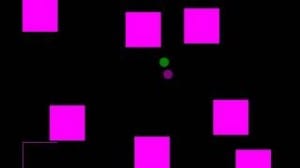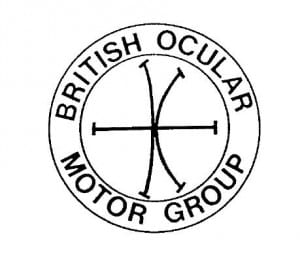This month I attended the London meeting of the Experimental Psychology Society. I presented preliminary analysis of some eye movement data we recorded whilst people perform a task based upon a widely used computerised neuropsychological test of spatial working memory (Cambridge Cognition Ltd’s CANTAB SWM test).
Spatial working memory refers to the short term storage of information in memory about where things are in space for guiding our behaviour and actions. In the Cantab task “tokens” are hidden under boxes on a screen and participants have to search for them by clicking with a mouse on the boxes and remember where they found the tokens to guide subsequent box selections (as tokens are never hidden under the same location twice). As you can see in the videos here: http://www.youtube.com/watch?v=PStfmW6q_c0 participants make quite a lot of eye movements in the task! So the challenge has been to make sense of how eye movements are guided. Are they shaped by the memory of where tokens have been found, such that the eyes help to keep track of the route covered? Or do they exclusively plan a search route ahead selecting the next box to be clicked on? Might eye movement measures extracted from the task be useful in assessing memory problems?
 Our analysis suggests that most eye movements look ahead and select the next box to be clicked on well in advance of the mouse click which reveals its contents. However, particularly in a few participants, the eyes also get drawn back to locations where tokens have already been found, even if they don’t click on the box, indicating that they do actually remember that a token hasnt been found there (see here for a nice example: http://www.youtube.com/watch?v=xtoCLcqtHnM). These subjects were more likely to go on to make lots of actual click errors in the most difficult version of the task though, suggesting eye movements measures may be more sensitive than just mouse clicks.
Our analysis suggests that most eye movements look ahead and select the next box to be clicked on well in advance of the mouse click which reveals its contents. However, particularly in a few participants, the eyes also get drawn back to locations where tokens have already been found, even if they don’t click on the box, indicating that they do actually remember that a token hasnt been found there (see here for a nice example: http://www.youtube.com/watch?v=xtoCLcqtHnM). These subjects were more likely to go on to make lots of actual click errors in the most difficult version of the task though, suggesting eye movements measures may be more sensitive than just mouse clicks.
We have more analysis and work to do with this task and hope to get some people with Parkinsons to do the test as we think they may show subtly different patterns of eye movements in the task to otherwise healthy individuals.








